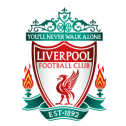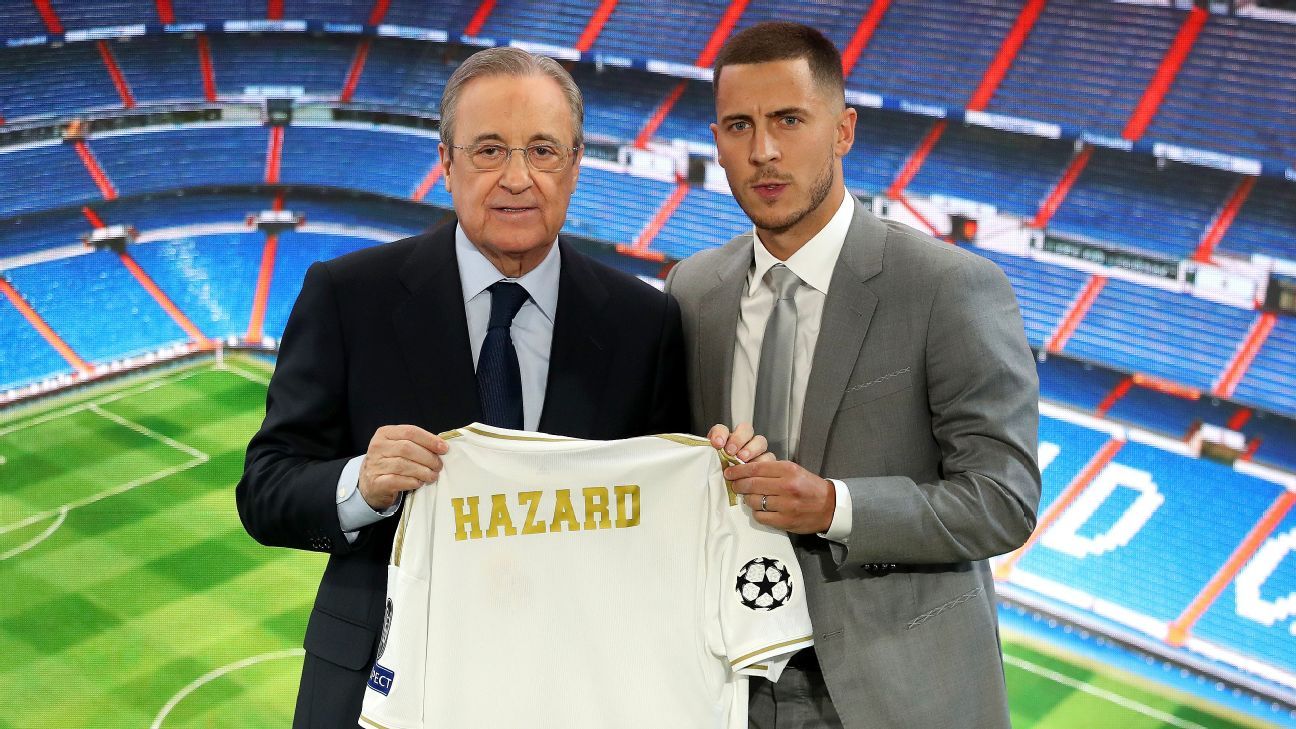Products You May Like
The world of football transfers is full of errors; no club can get it 100% right the whole time. However, some have more of a track record of failure than others — whether it’s spending mountains of cash on one player (Real Madrid), consistently making poor decisions in certain positions (Man United), or handing your megastar a new contract just before his form goes out of the window (Arsenal).
Since 2010, Europe’s top clubs have all done something wrong. Here’s a look at some of the biggest mistakes in the transfer market over the past decade.

ARSENAL: Spending £72m to sign Pepe
When there is an internal investigation over whether you overpaid for your club-record signing, you know it’s bad. The £72m fee was reportedly spread over five years, which allowed Arsenal to sign Nicolas Pepe but also saddled them with debt, while the winger has not lived up to his price tag on the pitch. Raul Sanllehi departed as Arsenal’s head of football shortly after news of the investigation came out, but he had already offered the 32-year-old Willian a three-year contract, while 29-year-old back-up full-back Cedric Soares got four years. Both of those decisions were worse than giving the now-exiled Mesut Ozil a new contract worth around £350,000 a week (making him the highest-paid player in the club’s history) back in January 2018.
A close second: One could argue that you have to go back to 2016 under former manager Arsene Wenger to find Arsenal’s poorest transfer decisions: letting Serge Gnabry go and signing Granit Xhaka (£35m), Shkodran Mustafi (£35m) and Lucas Perez (£17.1m) that same summer. Gnabry was allowed to join Werder Bremen for around £5m and has since moved to Bayern where he has become one of the best in the world, while the trio who arrived have not impressed. Wenger also allowed Robin van Persie to move to Man United in 2012 for £24m, where the injury-prone striker immediately won them the title, but nobody could have predicted that one.
2:06
Julien Lauren reacts to Lionel Messi latest comments about his future with Barcelona after this summer.

BARCELONA: Spending over €420m on four players
Barcelona‘s debt has doubled to €488m amid the COVID-19 pandemic, but there has been a fair amount of financial mismanagement at the heart of the club for many years. Just look at some of the transfer fees spent on players who haven’t worked out. Atletico Madrid were handed €120m for Antoine Griezmann in 2019, for which Barca had to take out a loan; Malcom cost €40m from Bordeaux a year earlier; Ousmane Dembele (€105m) and Philippe Coutinho (€160m) have flopped. Add in a host of other expensive players who made little impact, including Arda Turan, Paco Alcacer and Andre Gomes, and it’s not hard to see why the club find themselves in such a precarious financial position.
A close second: Letting Luis Suarez depart for a direct rival for nothing this summer was not the smartest move. Firstly it annoyed his best friend, Lionel Messi, then the way it was handled was a PR nightmare, and finally the 33-year-old has gone and scored eight goals in 11 games to take Atletico top of La Liga, while Barca are in crisis.

BAYERN MUNICH: Signing Sanches from Benfica
Bayern have always been mindful of sticking to their budget; only Lucas Hernandez‘s €80m arrival from Atletico Madrid in 2019 broke the €40m transfer record set by Javi Martinez back in 2012, and they rarely splash out on big signings. But Renato Sanches could have eclipsed both if his €35m move, with another €45m in add-ons, from Benfica had gone as planned in 2016. Bayern did well to make sure they didn’t pay everything up front, as the Portuguese teenager flopped badly and ended up on loan at Swansea, but they also took a terrible gamble on an 18-year-old.
A close second: The aforementioned Lucas deal hasn’t exactly gone to plan either, with the Spain international not proving very good value for money. While Mario Gotze‘s €37m move from Dortmund seemed a good idea at the time, he never lived up to expectations (although he still won seven trophies during his three years at the club.)
0:30
Globe Soccer Player of the Year Robert Lewandowski remarks on winning in the era of Cristiano Ronaldo and Lionel Messi.

BORUSSIA DORTMUND: Letting Lewandowski leave on a free
Dortmund have done pretty well in the transfer market in recent years, bringing in the likes of Erling Haaland, Jadon Sancho and Giovanni Reyna for virtually nothing. But there was a time this decade when they couldn’t stop rivals Bayern from taking their best players: Mats Hummels, Mario Gotze and the jewel in the crown, Robert Lewandowski. Since he left Dortmund in 2014, the Poland striker has become one of the best of all-time, and the worst part is that he moved on a free transfer. Dortmund had a chance to get him to sign a new deal, but they failed and have been regretting it ever since.
A close second: Germany winger Andre Schurrle joined Dortmund in 2016 for around €30m but failed to impress and was sent on loan to Fulham and Spartak Moscow. He then announced his retirement at the age of 29, before his contract was up, in 2020. That summer also saw Gotze return from Bayern for €22m, which also didn’t work out.

CHELSEA: Letting De Bruyne and Salah go
Chelsea agreed a £7m deal with Belgian side Genk for midfielder Kevin De Bruyne in January 2012, and he headed off on loan to Werder Bremen for the 2012-13 season. After impressing in the Bundesliga, his return to England would surely give him a chance to shine, right? Wrong. Manager Jose Mourinho didn’t see his talent, and by January 2014 he had been allowed to move permanently to Wolfsburg for around £18m. Just 18 months later, Man City paid around £55m to sign him and now he’s the best attacking midfielder in world football.
Sadly for them, Chelsea did not learn from that mistake. In January 2014, the Blues announced an £11m deal to sign a relatively unknown Egyptian winger called Mohamed Salah from Swiss side FC Basel, but three years later, with only 19 games and two loan spells at Fiorentina and Roma under his belt, he joined Roma for around £12m. One incredible season later, Liverpool came calling for around £36.9m and turned him into one of the best forward players in the world. Just imagine what Chelsea could have been with Salah and De Bruyne on the same team…
A close second: Imagine spending a world record sum of £71.6m for a goalkeeper and for that goalkeeper to then be a backup just two years later. Kepa Arrizabalaga started off well at Chelsea after arriving from Athletic Bilbao in 2018, but his form has dropped off a cliff in recent months, which was enough to persuade the club to spend £20m on Rennes’ Edouard Mendy. The Senegal international kept 10 clean sheets in his first 16 appearances — matching the same number made by Kepa in 45 matches under Frank Lampard. Chelsea have form in this area — spending £60m to sign Alvaro Morata, £50m for Fernando Torres, £40m for Tiemoue Bakayoko, £35m for Danny Drinkwater, £33m for Michy Batshuayi — so the fans can’t say they didn’t see the failure of a big-money signing coming.

JUVENTUS: Signing ex-Arsenal players
Juve’s relationship with Arsenal over transfers is an odd one. Having let them sign Thierry Henry for a mere £11m in 1999 (before the Gunners turned him into one of the best players in the world), the Italian side have not found much success bringing players the other way. The legendary Patrick Vieira arrived in 2005 but lasted only one season before moving to Inter Milan, while over the past decade the list gets worse. Armand Traore (2010), Nicklas Bendtner (loan, 2012) and Nicolas Anelka (2012) set the tone before a rather odd deal to take young English striker Stephy Mavididi (2018) saw him make just one appearance in two years. Only goalkeeper Wojciech Szczesny (2017) and Aaron Ramsey (2019) can claim to have had any kind of success in Turin having previously played at Arsenal.
A close second: Juve have a bit of a reputation for landing top players on a free transfer, but Barcelona’s Dani Alves was not a success. The Brazilian full-back spent one season at the club, but didn’t impress before he broke his leg, and in 2017 he posted a picture on Instagram of the boots he wore in the 2015 Champions League final (when Barcelona beat the Bianconeri 3-1) which provoked an angry reaction from the Juve fans. Not long after, he joined PSG for nothing.
1:42
Shaka Hislop wonders why Mohamed Salah would want to leave Liverpool at the moment.

LIVERPOOL: Replacing Torres with Carroll
Fernando Torres was a legend at Liverpool, and his 81 goals in 142 games during his four-year spell were never going to be easy to replace when he joined Chelsea for £50m in January 2010, but making Newcastle’s Andy Carroll the most expensive British footballer at the time was not the way to do it. It was a panic buy, and while the signing of Luis Suarez from Ajax helped bridge the gap somewhat, the Reds went through a tough time — plus £40m of Christian Benteke and £15m of Mario Balotelli — before Carroll left in 2014 and Roberto Firmino eventually came into his own under Jurgen Klopp.
A close second: Signing relatively unknown goalkeeper Loris Karius from Mainz for £4.7m in 2016 seemed an OK move as nobody thought he would rise to become No. 1. He did and that decision ultimately cost Liverpool the 2018 Champions League final against Real Madrid, as his meltdown put paid to his Anfield career.

MANCHESTER CITY: Signing Mangala
When Man City landed Eliaquim Mangala for £42m from FC Porto in 2014, it seemed like a statement of intent — the big-spending club making the Frenchman the most expensive defender in British history. But with 79 appearances for City in four years, before leaving for Valencia on a free transfer in 2019, it was a disaster. “I found a league that is very tough,” he later told The Athletic. “It was totally different to what I knew before. It was very intense.”
A close second: Choosing Wilfried Bony over Paulo Dybala was also a pretty poor decision. Edin Dzeko‘s 2015 exit to AS Roma left a hole up front, but instead of signing the man dubbed “the new Sergio Aguero” from Palermo, City opted to put £28m down for Swansea’s Bony. The Ivory Coast international scored six goals in 26 league games before heading back to Swansea for half what City paid and is now looking for a new club after leaving Saudi Arabian side Al-Ittihad. Dybala joined Juve and has become a global star.
1:47
Gab Marcotti and Julien Laurens assess a potential Paul Pogba and Paulo Dybala swap deal.

MANCHESTER UNITED: Letting Pogba join Juventus and buying him back for £89.3m
Sir Alex Ferguson didn’t make too many mistakes in general, let alone in the transfer market, but allowing Pogba to join Juventus in 2012 was probably his biggest. The reason? Ferguson claimed in his 2015 book that “there are one or two football agents I simply do not like, and Mino Raiola, Paul Pogba‘s agent is one of them. I distrusted him from the moment I met him.” United picked up £800,000 in compensation but were forced to spend £89.3m to re-sign the midfielder four years later in 2016. While the French World Cup winner is still one of the best players around when he wants to be, United probably could have done without the circus that has followed him in recent years. He may yet return to Turin, but United won’t get half the price they paid.
A close second: Ferguson also made a monumental error of judgement in the £7m signing of Bebe in 2010, despite never having seen him play. The Portugal forward made only two appearances before leaving for Benfica in 2014, and United’s attempts to find a long-term replacement for Ryan Giggs included a host of expensive flops: Wilfried Zaha (2013), Angel Di Maria (2014), Memphis Depay (2015) and Alexis Sanchez (2017). The swap deal that brought Sanchez to United and sent Henrikh Mkhitaryan to Arsenal is probably the worst in history, but both clubs suffered so it’s hard to pick a winner.

At first glance, this kind of spending power is pretty impressive. It lays down a statement if nothing else. But €222m is a ridiculous amount to spend on a player, and realistically the club’s 2017 decision has had massive ramifications across the European market ever since. For starters it ruined the concept of a low buyout clause, meaning that squad players like Barcelona’s Martin Braithwaite have clauses set at around €300m. It made Barca sloppy in forking out huge sums for Malcom and Griezmann, contributing to their issues (see above). And it helped push pre-COVID prices up so far that Harry Maguire (€87m) was worth more than Virgil van Dijk (€84m), while Arsenal’s €80m to sign Nicholas Pepe was €4m more than Man City had to pay for Kevin De Bruyne. It just makes no sense. Worst of all, it didn’t even work that well. Yes, Neymar has won Ligue 1 three times in three years, but he hasn’t delivered the Champions League and has spent most of the time seemingly angling for a move back to Barcelona.
A close second: The transfer dealings done in 2016 proved pretty poor for PSG. They signed Julian Draxler (€36m), Goncalo Guedes (€30m), Grzegorz Krychowiak (€27.5m), Jese (€25m) and Hatem Ben Arfa (free). All of those players flopped. And it was also the year they let Zlatan Ibrahimovic join Man United.
0:51
Shaka Hislop fully admits his amazement surrounding the Dele Alli to Real Madrid rumours.

REAL MADRID: Spending €100m on Hazard
Selling Cristiano Ronaldo to Juventus in 2018 could be construed as a mistake, given his incredible scoring record since. But Ronaldo was 33 years old and Madrid got €100m for him, so really they did very well out of the deal. They even managed to land No. 1 target Eden Hazard from Chelsea for around the same amount — although some reports have claimed they may end up paying up to €160m for the Belgian. However, injuries have hampered the winger, and he’s only managed three goals in 29 games in 18 months. He has time to turn things around, but right now he looks like a very expensive mistake.
A close second: Madrid have form here too, with James Rodriguez (€75m), Luka Jovic (€60m), Asier Illarramendi (€40m), and to a lesser extent Mariano Diaz (€21.5m), Brahim Diaz (€17m), Lucas Silva (€13m) and Nuri Sahin (€10m), all having their careers derailed after a move to Madrid.

TOTTENHAM: Failing to spend the Bale money wisely
Gareth Bale left Spurs for Real Madrid in 2013 and £85.3m went into the club’s accounts. But that cash was used on Roberto Soldado, Paulinho, Etienne Capoue, Vlad Chiricheș, Nacer Chadli, Erik Lamela and Christian Eriksen. After selling Bale, Spurs didn’t reach the Champions League for another three years, and only Eriksen could be considered a unqualified success — although Lamela has had his moments and, unlike any of the others listed above, remains at the club.
A close second: Go back to 2012 and Harry Redknapp wanted to sign Carlos Tevez and Gary Cahill in January to challenge for the title, but brought in Louis Saha and Ryan Nelsen on free transfers instead. That was a missed opportunity, and Spurs haven’t had much luck in the striking department since. Harry Kane‘s arrival on the scene in 2014 — following loan spells at Leyton Orient, Millwall, Norwich and Leicester — was an immediate boost to the strikeforce, and his 204 goals in 310 appearances suggest the club won’t need to find another main striker for some time. However, they have struggled to find a reliable backup for the England international. Soldado (£27m), Vincent Janssen (£19m) and Fernando Llorente (£14m) have all had issues, meaning a loan move for Carlos Vinicius seemed the best option this summer.
